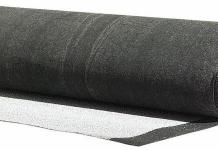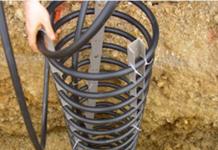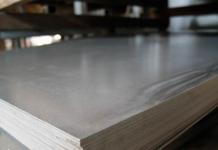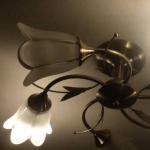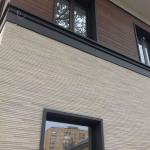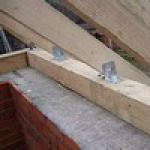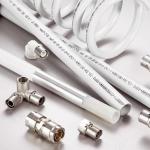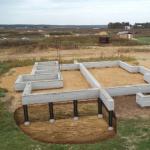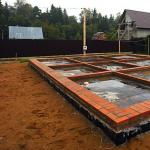Sheet steel is in great demand due to its high reliability, ease of processing and low price.
This page is of interest to those who want to purchase quality sheet steel at affordable prices.
Types of sheet steel
Sheets of steel are a type of rolled metal. This material is used in a variety of industries. There are several divisions of sheet steel into types:
- based on the production method, steel in sheets is divided into hot-rolled, they are used in the automotive industry and in construction for sheathing various structures, and cold-rolled, parts are made from such metal by stamping;
- in terms of thickness, steel can be thin-sheet and thick-sheet;
- finished products can be presented in sheets or rolls.
In addition, steel sheets can be corrugated, with notches in the form of cells, and also have a protective coating of zinc. Each of these types is designed for a specific technological process.
Sheet steel is easy to work with, it bends well, holds its shape, and lends itself to welding. Sheets of steel can serve as a material for the manufacture of various metal structures and their cladding.
After additional processing from sheet steel, corrugated board with different technical characteristics is obtained. They depend on the protective coating used.
Specifications
Steel is an alloy with high strength. These properties are also inherent in products made from it. Metal sheets made of simple steel are used for the further production of various parts.
Particularly strong sheet steel is made of an alloyed alloy. The introduction of mineral additives into the melt improves the quality characteristics of steel many times over. Carbon steel is also highly durable.

The most popular is galvanized steel. For the manufacture of this type of rolled metal, low-carbon rolled steel is used, obtained by cold rolling.
The thickness of the protective zinc coating may vary, depending on its value, all galvanized steel is divided into three main categories.
When creating overall structures, expanded metal sheets are used. During the manufacturing process, special notches are applied to the sheet, after which the steel is drawn. As a result, the weight of the metal sheet can be significantly reduced.
Watch a video on how steel is made:
Sheet steel is a kind of metal products, the main feature of which is a large ratio of its width to thickness. It is used in various branches of production and industrial activities, and has also found application in landscape and interior design, the manufacture of fences, load-bearing elements, etc. You can leave a request for the supply of sheet steel.
Varieties of sheet steel
The first step is to highlight the classification of sheet steel, depending on the method of its production. She may be:
- Hot rolled. Such steel is made from preheated ingots to a certain temperature. It is rolled through special shafts, which give it the necessary geometric shape and dimensions. As a rule, products of this type are used in the production of welded structures, bodies, roll-formed sections, etc.
- Cold rolled. Sheet steel of this type has a higher geometry accuracy and is made from hot-rolled sheets by rolling through special shafts. This allows you to strengthen the structure of the material and make it more durable and strong. Cold rolled steel sheet is used in the manufacture of products with high requirements for accuracy.
In addition, it is worth highlighting separately steel sheets with zinc protection. An additional layer of zinc is applied to ensure the resistance of the material to moisture and corrosion. On our website you can buy any kind of sheet steel.
Also, steel sheets can be divided into 2 groups depending on their thickness:
- Rolled sheet. Such products are characterized by a thickness of less than 3 mm. They can be edged, and also supplied in the form of rolls or individual sheets;
- Plate rolled. This group includes products with a thickness of more than 3 mm. They can also be supplied in rolls or single sheets.
Thus, a fairly wide variety of steel sheets can significantly expand the scope of their application in a wide variety of modern industries. Such material is indispensable in construction, production of automotive, aviation and marine equipment, furniture, etc. In addition, sheet steel is actively used in the manufacture of finishing and roofing materials - profiled sheets, metal tiles, metal slates, etc. It has a fairly high technical characteristics and at the same time has a relatively affordable cost.
As soon as people learned how to melt metal and produce products from it, they were able to appreciate the useful properties of steel (strength, durability, wear resistance). Creating their first masterpieces, blacksmiths felt the need for thin sheet iron. With hammers and sledgehammers, they also flattened metal blanks, turning them into tin, and this was the first sheet steel. The process was long and laborious.
Progress did not stand still, and therefore more and more thin iron was required, appropriate equipment was created on which the sheets were first forged, and later they began to be rolled into it was extremely difficult with them because of their large thickness and small size. Therefore, they gradually switched to rolling sheets with a size of 1000 mm by 2000 mm and a thickness of 0.6 mm, and later - 1250 mm by 2500 mm and a thickness of up to 0.5 mm, while modern machines allow rolling a sheet from 0.25 mm thick and unlimited length.
And everything would be fine, but the metal, as you know, is subject to oxidation (rusts), at first they could not think of anything, they just painted it, but gradually people learned to cover the metal with zinc.
First, sheet steel is cleaned, while scale is removed from it using acid pickling. Then the hot-rolled strip is subjected to annealing in order to give it certain properties, physical and chemical. Not only sheet steel can be processed in this way, it can be applied to steel products: pipes, strips, and so on. Its process can be performed using various methods, they depend on the type of product. There are methods of hot galvanizing, electrolytic galvanizing and thermal diffusion.
With the hot method, the sheet is immersed in molten zinc, where the thickness of the coating is fixed, resulting in galvanized sheet steel. The thermal diffusion method is used for products that have a complex shape, including threaded ones. When applying a zinc coating, zinc follows the contours of the product. With the electrolytic method of galvanizing, a layer is applied using conductive rollers. Some users call this the cathode method. With it, a steel part is loaded into a bath in which a saline solution is located, then an electric current is passed through it. With this deposition of zinc, a layer is formed, the thickness of which is 0.5-10 microns.

Such work in modern metal rolling is very popular, it is difficult to overestimate it, after its completion the surface becomes protected from any influences.
Galvanization gives steel products corrosion resistance, after which they can be used to solve critical production problems. It is used in the automotive, construction, oil and gas industries. With the use of zinc, steel sheet weight changes slightly, but acquires the properties of protection from corrosion processes for a rather long period, it can be up to 50 years.
The surface quality of the processed sheets must be in accordance with GOST 16523-89, the sheet width is from 710 mm to 1800 mm, its thickness can be from 0.5 mm to 5 mm.
Sheet steel is divided into 3 classes, it depends on the thickness of zinc on the sheets:
Class "P" has a coating thickness of 40 microns and up to 60;
Class "1" - from 18 microns to 40;
Class "2" - from 10 microns to 18 microns.

Steel types of sheets can be ordinary and XIII-sheets, they are used for cold stamping purposes. There are types of steel sheets for cold forming: "H" for the manufacture of parts by the normal method; "G" for the method of manufacturing deep drawing parts; for the very deep drawing method, the marking "VG" is used; for cold profiling - "HP"; for subsequent painting use sheets "PC"; for general-purpose products, the marking "OH" is used.
In all the variety of rolled steel, there is such a common type as sheet steel. It is used in many types of construction and not only.
What is sheet steel? This is a metal plate with a small thickness and a flat surface, produced in accordance with GOST of the corresponding type. Strength, smoothness, a certain thickness - the result of a special process of creation using high temperatures. It is made from carbon, alloy or structural steel.
Sheet metal is divided into types, depending on:
This useful type of rolled steel is used to create ships, houses and pavilions, cars, machines for production. It is used in chemical industries, oil and gas production, for agricultural needs. In addition, it is this rolled product that becomes the foremother for fittings, car bodies, wagons, pipes, containers, and roofing.
In addition to a wide range of applications, this rolled metal is known for its ease of processing. Being subjected to various types of changes, with the help of special machines and devices, the sheets turn into the parts you need. Such metal can be bent, cut, deformed.
Another advantage is ease of transport!
sheet metal cost
 An important question that arises during the construction process is what is the price per sheet and per ton of sheet steel?
An important question that arises during the construction process is what is the price per sheet and per ton of sheet steel?
In order to find out the cost, just go to the catalog of the company "Atlant Metal". Here you can independently calculate the volume of steel of interest according to GOST, as well as find out the specific cost of a unit of goods.
In Moscow, we have all types and sizes of this construction detail. You have the opportunity to buy it right now, using the forms on our site!
